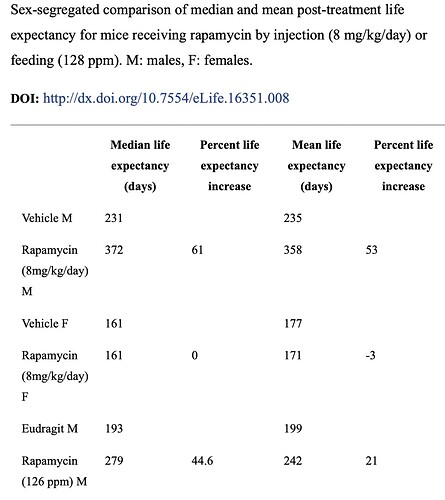The paper they reference (Johnson et al., 2015) is this one:
C, Johnson BM, Letexier N, McCanta L, Sangesland M, Tamis O, Uhde L, Van Den Ende A, Rabinovitch PS, Suh Y, Kaeberlein M. Dose-dependent effects of mTOR inhibition on weight and mitochondrial disease in mice. Frontiers in Genetics. 2015;6:e16351. doi: 10.3389/fgene.2015.00247.[PMC free article] [PubMed] [CrossRef] [Google Scholar]
and in that paper they state:
To assess the efficacy and effects of high-dose dietary rapamycin, control and Ndfus4 KO animals were fed chow containing 42, 126, or 378 PPM rapamycin beginning at weaning
Levels of circulating rapamycin increased in a linear manner from 14 to 126 PPM at a rate of approximately 3.2 ng/ml serum rapamycin per PPM dietary rapamycin increase, with linearity decaying between 126 and 378 PPM.
Dietary rapamycin reduced developmental weight gain in a dose-dependent manner in control animals, with strength of effect ranging from no observed impact at 14 PPM (data not shown), to a robust and highly significant reduction in body size at 378 PPM that is similar in magnitude to what we previously reported for daily injection of 8 mg/kg
Interesting conjectures on the rapamycin / Blood Brain Barrier issue that is widely discussed with regard to higher doses…
High-dose injection provided the greatest benefit to survival in the Ndufs4 KO model while oral rapamycin at 378 PPM had the strongest impact on developmental weight gain (Figures 3C,D); the bolus provided by injection provides an enhanced benefit over steady dietary delivery in the mitochondrial disease model, perhaps by overcoming blood-brain barrier. Daily IP injection of rapamycin at 8 mg/kg alters neural activity associated with aging (Yang et al., 2012) and robustly reduces whole brain levels of phospho-s6, an indicator of mTOR activity
…
Effective inhibition of mTOR in the brain may be necessary for the full benefits of rapamycin in both Ndufs4 KO mice and in normative aging.
ah - and yes - here in the paper it confirms my previous understanding of the different dosing calculations - one is food-based, one is mouse-weight based, and here they are identified as equal in terms of the the effect on circulating sirolimus/blood levels:
378 PPM dietary rapamycin (378 ug rapamycin per gram-food) is 27 times the dose used by the ITP, while IP injection requires only 8 ug un-encapsulated rapamycin per gram-mouse weight to achieve comparable circulating levels.
